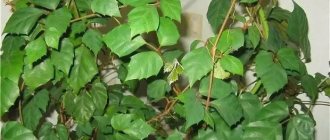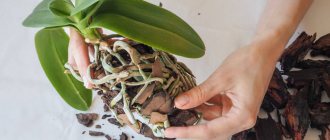Proper watering of violets at home
Before watering violets, you need to take into account the influence of a number of environmental factors. Do not forget about the peculiarities of the structure and functioning of the root system. Sufficient saturation of the flower with nutrients and moisture depends on it.
Watering violets is a troublesome task
Features of the root system of violets
Few gardeners, especially amateurs or beginners, take into account the fact that the root system of violets has a short-term functioning. After some time, mature roots are replaced by new ones that appear from adventitious branches.
In turn, the adventitious roots, having fulfilled their purpose, also die off. With a certain cyclicity, the entire root system of a flower goes through a period of complete renewal.
Along with the death of old roots, the flower ages. During this period, it needs to be strengthened to prevent the death of the plant.
Additional Information! To rejuvenate a violet, its above-ground part must be cut off and re-rooted in water or in the ground. This is the main condition for the plant to delight with constant, abundant flowering and bright colors.
What intensity of watering do violets like?
Experts recommend feeding the plant at the same time.
It is impossible to unequivocally answer the question of how regularly Saintpaulia should be irrigated. The frequency of watering is individual for each flower. It depends on many factors.
Factors that influence the intensity of water consumption
To figure out how to water violets in a pot at home, you need to consider the following nuances:
- air temperature;
- intensity of natural light;
- humidity - this factor will vary depending on the time of year;
- the substrate - the drier it is, the more regularly the violets need to be fed with water;
- flowering - during this period the plant needs more moisture;
- age of the bush;
- development of the root system - if the roots completely entwine the earthen ball, this leads to rapid drying of the soil.
For reference! Even what the pot is made of matters. In plastic, moisture lasts longer, but in a clay pot it will quickly evaporate through the walls.
Pests and diseases
Species violets are rarely affected by pests or diseases, but plants that were created as a result of breeding work are not so successful in this regard.
Diseases and their treatment
Most often, Saintpaulias suffer from fusarium, powdery mildew, rust, gray rot and late blight.
Powdery mildew covers the leaves, petioles and peduncles of violets with a whitish coating. The development of the disease is provoked by poor lighting, low temperature against the background of high air humidity, dusty leaves, excess nitrogen in the soil with a lack of potassium and phosphorus. A diseased plant is treated by treating it with a solution of Fundazol or Bentlan. In case of severe damage, repeat spraying after 10 days.
- Description and photo of euonymus
Late blight occurs when a fungal infection penetrates into the root system of a violet through wounds or cracks, resulting in rotting of the plant’s root collar and brown spots appearing on the leaves. First of all, late blight destroys plants weakened by poor care. The danger of the disease is that it cannot be cured. The diseased plant is destroyed and the pot is sterilized. To avoid late blight, be sure to add superphosphate to the soil and do not allow the air humidity in the room to be too high.
Gray mold, or botrytis, can be recognized by the fluffy brownish-gray mold on the above-ground parts of the plant. The disease develops rapidly, and as a result the plant dies. Browned parts should be removed immediately and the violet should be treated with a fungicide. Throw away the rotten plant along with the soil - it will no longer be useful to you. In order not to provoke the development of the disease, protect violets from drafts, sudden temperature changes and waterlogging of the soil.
Fusarium, or rosette rotting, occurs under conditions of excessive watering, the use of cold water to moisten the soil, temperature fluctuations, growing violets in heavy soil or in a pot that is too spacious. You can find out that a plant has fusarium blight by the following symptoms: the leaf petioles become brown, the leaves fall off, and the roots darken and are easily separated from the soil. At the first signs of disease, remove the rotten parts of the plant and treat the violet with some fungicide.
Rust appears as yellow-orange tubercles on the upper side of the leaves and rusty-brown pads on the underside. As the disease progresses, violet leaves begin to fall off. The fungus is destroyed by treating the plant with one percent Bordeaux mixture or a solution of some other fungicide, as well as dusting the violet with sulfur dust.
As a preventive measure against any fungal disease, including fusarium, treat violets once every two months with a solution of Fundazol.
Pests and their control
Among the pests that pose a danger to violets are mites, scale insects and false scale insects, aphids, thrips, nematodes, scale insects, whiteflies, woodlice, flies and mosquitoes.
Ticks. When infested with mites, depressed brown spots appear on violet leaves, as if made by a blunt needle. The violet is attacked by red spider mites, cyclamen mites and flat mites that feed on the sap of the plant, causing it to weaken and wither. You can rid the violet of all types of mites by treating it with acaricides - Akarin, Actellik or Fitoverm, and the last two drugs need to be additionally spilled over the earthen lump in the pot. The procedure is carried out in the fresh air - in the yard or on the balcony, since acaricides are toxic to humans. Don't forget to wear gloves, goggles and a mask.
Scale insects and false scale insects prefer to settle in rosettes with smooth leaves. You can guess their appearance by the sticky droplets of discharge. If during inspection you find at least one adult insect, the entire plant must be treated with Agravertin.
Thrips can enter the room along with poplar fluff or flowers from the garden. These sucking insects are dangerous because they instantly multiply and are able to occupy neighboring plants. They violate the integrity of the stamens, leave silvery nibbles on the flowers, and brown or black spots on damaged leaves. In the fight against thrips, you need to remove all flower stalks on the violet and treat the plant with Fitoverm, Actellik or Aktara.
Nematodes are microscopic worms that live in the soil and infect the root system of violets, sucking juices from it and releasing toxins in return. As a result of the vital activity of nematodes, galls are formed on the roots of the plant - swellings similar to beads. There are also leaf nematodes that parasitize the leaves and buds of violets: first, light spots appear on the leaves, gradually darkening and rotting. Symptoms of the presence of leaf nematodes resemble those of gray mold disease, but without mold.
It is impossible to get rid of nematodes - you will have to destroy the diseased plant so that the pests do not spread to neighboring flowers. You can try to restore the violet by rooting a healthy leaf without any spots. You can prevent the appearance of nematodes by growing flowers in soilless peat soils, adding a Piperazine tablet to each pot.
Scale insects most often settle on young flower stalks, in the axils and folds of leaves. In places where the insect bites, the plant becomes deformed and turns reddish or brown. Soil scale insects prefer to feed on violet roots. Their presence can be detected when replanting a plant - the soil acquires a sour mushroom smell, and female mealybugs are covered with a white substance resembling a lump of fluff or cotton wool. The scale insects living on the ground parts are destroyed by two-stage treatment of the violet with Atellik or Fitoverm, and Mospilan, Reget or Dantop are used against soil parasites, spilling the solution of the drug onto the violet soil three times with an interval of 10 days.
Aphids infect peduncles, buds, and violet flowers, sucking out the sap of the plant, which causes the flower petals to become deformed and the violet flowering to look incomplete. In case of severe damage, a sticky liquid forms on the leaves and peduncles - the secretions of aphids, on which a sooty fungus settles, forming a black coating. To get rid of aphids, carry out 2-3 sessions of treating the plant with Actellik (1 ml of the drug per 1 liter of water).
Woodlice appear on violets if you keep the soil in the pot moist all the time, without allowing the earthen lump to dry out. In appearance, they resemble small turtles, not exceeding 1.5 cm in length. Woodlice damage the roots and leaves of the plant, which leads to secondary infections. The most effective way to combat woodlice is to treat violets and potted soil with acaricides. The plant is sprayed, and the substrate is spilled with Actellik or Fitoverm solution.
Flies and mosquitoes settle on violets when the soil in the pot is chronically waterlogged. They themselves do not cause much harm, but their larvae destroy the substrate, damage the roots of the plant, and contribute to compaction of the soil, which reduces the access of air to the roots. Young plants suffer the most from insects. As a result of the vital activity of these insects, rotting of the roots and stem occurs.
Having found pests, spill the soil in the pot with Karbofos solution, trace the edge of the container with a chalk pencil against cockroaches, grate the pencil and sprinkle the surface of the soil in the pot with these shavings. Adults can be destroyed with Reid or Dichlorvos aerosol. And review the violet watering schedule.
Springtails, or springtails, also grow on violets due to dampness. They are harmless to violets, but when there are too many of them, they can damage the plant's roots. Spray the earthen lump of violet with Pyrethrum and stop flooding the plant.
Whiteflies are small, bright white flies that sit on the surface of leaves and leave sticky excrement on them - a favorite environment for sooty fungi. Therefore, the surface of the leaves first turns white and then turns black. As a result, the violet stops growing shoots. An effective measure is to treat violets with a mixture of a systemic insecticide and acaricide. To get rid of whiteflies, you will need at least two sessions.
Violet doesn't bloom
Novice flower growers sometimes come to us with complaints that, despite all their efforts, they cannot wait for their violets to bloom. So why doesn't the violet bloom? Let's analyze the reasons for this phenomenon.
It is difficult to expect violets to bloom if:
- there is not enough light for her;
- she has less than 12 hours of daylight;
- the substrate is oversaturated with nitrogen fertilizers;
- the rules for watering the plant were violated;
- the air in the room is not humid enough - violets require a humidity level of 50%;
- the soil in the pot is too heavy and dense;
- the plant’s pot is too spacious;
- the violet is damaged by pests or is sick.
The violet turns yellow
Beginner violet lovers are often concerned about the fact that violets' leaves turn yellow. Why is this happening? Sometimes leaves turn yellow due to a natural reason - old age. It is better to remove such leaves along with the petioles. The second reason is the burning of leaves under the bright rays of the sun, drying out of the soil or overheating of the plant. Moisten the soil in the pot using bottom watering and organize protection of the plant from the sun at midday - you can hang curtains on the window, or you can cover the glass with sun-protective film.
If possible, place violets on a windowsill facing north, northwest or northeast. Be sure to monitor the acidity of the soil - the norm for Saintpaulia is 5.5-6.5 pH. And don’t get carried away with phosphorus fertilizers at the expense of nitrogen fertilizers - the plant needs nitrogen, including for the violet leaves to be green.
If, after the leaves have turned yellow, the base of the stem turns brown and becomes soft, the plant is suffering from excess moisture and too low a temperature.
Spots on violets
Spots on violet leaves appear for various reasons. For example, light yellow spots are the work of thrips. And if black dots are visible on the leaf under a magnifying glass, then these are spores of a parasitic fungus. Black coating on the leaves is from sooty fungus. Round light brown spots on the leaves and flowers of the plant are sunburn. Gray-beige small spots in the form of blots, stripes and curls all over the sheet are the consequences of drafts.
Dark spots along the edges of old leaves arise from a lack of potassium - this is a signal to change the substrate in the pot. White spots or plaque are signs of powdery mildew. Dark spots covered with gray mold fluff are gray rot. Dark red spots are rust.
Negative consequences of improper watering
How to water gooseberries in summer - the best watering methods
Lack of moisture or its excess has a bad effect on the condition of the violet, leading to gradual death:
- Excessive moisture - the roots die, spots appear on the leaves. This occurs due to the fact that water stands in the ground, preventing nutrients from passing through.
- Flooding of flower organs during top watering means rotting of the growing point.
- If water gets on the leaves when watering from above, brown and yellow spots appear.
- Lack of water - leaves wither and fall off.
- Using too hard a liquid will result in a yellow-white crust appearing on the top layer of soil.
- Infrequent watering - a space is formed between the soil and the walls of the container.
Improper watering causes the plant to slowly die
Excessive flooding can lead to mold on the ground. Because of it, the soil is less permeable to air, and the roots cannot fully “breathe.”
Possible difficulties
The most common questions about indoor violets are related to the lack of flowering, yellowing of foliage and leaf spotting.
- If your violet does not bloom, then, in addition to pests, there may be a number of reasons for this: lack of light, short daylight hours, excess nitrogen fertilizing, excessive amounts of moisture in the soil or lack of it in the air. This problem is also caused by a large growing container and an excessively dense substrate.
- Yellowing of the leaves may indicate aging of the flower. This also occurs when placed in direct sunlight.
- This can be observed when the soil acidity deviates from the norm, as well as when there is an excess of phosphorus fertilizers.
- Most often, spots on leaves are the result of pests and diseases, but sometimes they appear due to drafts.
- Spots on the edges of the leaves indicate a lack of potassium in the soil - which means the substrate has become depleted and it’s time to replant the flower.
- Dry spots form if the violet is exposed to direct sunlight.
chvetochki.ru
Basic watering methods
There are several watering methods. You need to know which one is suitable for indoor violets so that it feels good and develops fully.
Upper
How to water an orchid: in a pot and at home
This is a classic watering method that can be used to care for violets.
Attention! When top watering, do not place a sprayer on the watering can. Watering the leaves is strictly prohibited.
The essence of the method is that the water should only get under the root or be absorbed by the soil around the edges of the pot. It is best to use a syringe without a needle, a watering can with a very narrow nose, or a syringe. The liquid must be poured until it appears at the bottom of the pan. Its excess is removed after 20 minutes.
When top watering, it is forbidden to pour water on the leaves.
Through the pallet
This method is recommended for use during the cold season. Water is poured directly into the pot's base until the soil stops absorbing it. After 15 minutes, the residues are drained.
Capillary
The technique is used for young violets. Several pots are placed in one box. A capillary mat is placed on the bottom. It is a piece of non-woven material that is saturated with liquid and holds it for a long time.
Plants that stand on the mat gradually absorb water through their roots. This method is preferable because the flowers constantly receive moisture. The method reliably protects the soil from drying out.
Wick
The method is suitable for those who are forced to leave home for a long time. Thanks to the use of a wick, the liquid will flow drop by drop to the flower for a long time.
One end of the wick is lowered into a container of water, the other end is inserted into the drainage hole in the flowerpot. If the flowerpot is small, you can use a plastic glass. Water is poured into it, the container with the violet is placed on top, but so as not to touch the liquid. The wick is in the water and rises into the drainage hole.
The wick method of irrigation is one of the most suitable; it makes it possible to saturate the plant with moisture for a long time
For reference! You can use a regular shoe lace as a wick.
Dive
This method of watering is known as Texas method. Flowers really like it, but the gardener will have to spend time and effort to create the conditions for its organization.
Holes are made on the sides of the flowerpot at a height of 5 cm from the bottom of the container. Perlite is laid up to the level of the holes, with earth on top. The container with the flower is placed in the ditch, the liquid is poured until the holes are made.
It is impossible to drown the holes with water, so as not to block the access of oxygen to the roots. When using this method of irrigation, it is recommended to choose fibrous peat soil.
Description, photo
Violets or Saintpaulias belong to the violet genus. They grow mainly in areas with temperate climates. They are common in areas located in the northern part of the equator. There are varieties that have a limited habitat. For example, species found only in the South African Andes, Brazil, New Zealand.
Information! The name Saintpaulia was given by the German soldier Saint-Paul, who brought the seeds of the plant from Africa and then grew it in his homeland.
Violets are perennial herbaceous plants, rare of which are of the shrub type. Indoor views have basic similarities:
- The leaves have different shapes, depending on the variety. Can be round or oval. The color varies from dark green to green with shades of silver. They can be painted in different colors along the edges of the plate. Reach 8 cm in length.
- The stems are of 2 types: shortened or branched, forming many rosettes.
- The roots are poorly developed, the type of system is fibrous.
- Violet flowers are amazing. Thanks to selective selection, types of unique beauty have appeared; sizes vary from small to large and unusual. The inflorescences form the appearance of a small lush bouquet.
Saintpaulias come in indoor, garden and wild varieties.
Information! Garden violets are in demand in landscape design.
Seasonal watering
The intensity of watering violets depends on the time of year. Based on weather conditions, temperature and humidity levels will change.
in winter
Adenium care at home: rules for pruning and replanting the plant
In winter, violets need rest, so the frequency of watering should be reduced. In the cold season, the use of fertilizing is excluded, and the abundance of lighting is reduced. The recommended frequency of watering is 1 to 3 times a week.
Additional Information! If the roots of a plant begin to rot, only replanting can save it. New soil and a minimum level of humidity will help the violet recover. You need to know whether it is possible to spray violets with water - no, there should be no liquid on the leaves.
In summer
In summer, the frequency of watering depends on the room temperature; the ideal temperature for violets is 25 °C. At this temperature, you can water the flower every other day.
If the room is very hot, daily watering is allowed.
In hot weather, the flower should be watered at least every other day.
How many times and how often should violets be watered?
This indoor flower is moistened infrequently and moderately. The recommended number of waterings per week is 1–3 times. However, each plant owner will control the frequency of watering himself. The signal for moisture is the dry topsoil.
The frequency of watering will depend on several factors:
- other parameters of the indoor microclimate: lighting and air humidity;
- the composition of the substrate in which the violet is planted;
- size of the root system;
- growth period;
- pot material.
The soil will dry out faster if the pot is in intense light and dry air. And, conversely, the more shade the flower is and the higher the air humidity, the less often it is necessary to moisten the soil. Less moisture will be needed on cloudy days.
More watering will be needed if the violet is planted in the recommended light and loose substrate. Flowers grown in denser soil will need less moisture.
The size of the root system will also affect the watering regime. If it has grown well and filled the entire pot, it absorbs moisture more intensely, which means the soil will dry out faster.
During the flowering period, the plant needs more strength and nutrients, so at this time its need for water increases. During the blooming phase, violets need to be watered more often and more abundantly.
Important! It is not recommended to spray violets. To maintain a high level of humidity, you need to install a humidifier, wipe the leaves with a wet cloth, and place the pot on a tray with wet pebbles or expanded clay.
These flowers grow equally well in both plastic and ceramic containers. But when planting in the latter, they need to be watered more often, since moisture evaporates from the ceramic faster.
As for the amount of water needed for one bush, there can also be no general recommendation. The amount of watering will depend on the frequency of watering, the composition of the substrate, the age and size of the plant.
Characteristics of water for irrigation
In order for the violet to grow well, in addition to the correct irrigation technique, you need to select the optimal water parameters for it. The hardness, acidity and temperature of the liquid matter.
Temperature
Regardless of the time of year, you need to water the flowers with warm water. Using cold liquid will cause violet diseases and rotting. The ideal temperature is 35 °C - 40 °C.
Acidity
The acidity level should be neutral - from 5.5 to 6.5 pH.
Rigidity
The fact that the water is too hard will be indicated by the presence of a white coating on the soil and on the walls of the flowerpot. To reduce the hardness index, vinegar (1 teaspoon per 1 liter) or citric acid is added to boiled water - 5 crystals per 1 liter.
This water can be used no more than once a month.
Can I use boiled tap water?
Running water is definitely not suitable for this indoor flower. It contains chlorine and a high concentration of mineral elements, which have a detrimental effect on the plant. When boiling, on the contrary, all useful substances disappear.
The ideal option is to run the water through a filter. The main thing is that there is no silver in it. If there is no filter, running water should be left to stand for a day. During this time, chlorine will be released from it and the concentration of minerals will decrease.
Water for irrigation must meet certain characteristics
Types of indoor and wild violets
The most common indoor varieties are:
| Name | Characteristic |
| Currant sorbet | The leaves are velvety, rich green in color, the flowers are small in diameter, purple, with a dark currant hue along the edge of the petal. |
| Zemfira | The petals are arranged in a separate pattern, the rosette is of medium size, the leaves are light green, covered with short fluff, the color of the petals is bright purple with white splashes. |
| Magdalena | The flowers have double inflorescences of a pink hue, the density of the inflorescences creates the feeling of a fluffy bouquet, the leaves are green and not glossy. |
| Quinn Sabrina | The species is distinguished by the fact that the petal has fuzzy stripes, which are several shades darker than the color of the petal itself, the rosette is small, and the leaves are dark green. |
| Smile of winter | The most beautiful view. The flowers are an unusual light pink shade with a golden border, the rosettes are small and green. |
| The bride's bouquet | Large white double flowers are combined with rich green ruffled leaves. |
| Marshmallow | The name speaks for itself, this type has pink or white-pink shades of petals, creating a feeling of lushness. |
| Pauline Viardot | Named so by breeders. Large flowers in the shade of burgundy wine, variegated, semi-oval rosette. |
The most famous wild representatives:
- Swamp - a grass that comes from fairy tales, has medium leaves, small flowers in muted shades of blue and purple.
- Canine - common in forests and meadows. Serves as food for butterflies.
- Vitrocca is the name given to the garden type, better known as pansy. A hybrid form that combines many groups.
Information! Pansies are used for medicinal purposes as a diuretic or antipyretic.
How to water at various stages of development, transplantation, rejuvenation
Features of watering violets at different stages of their development are presented in the table.
| During and after soil change | During flowering | Rejuvenation period |
| Immediately when changing the soil, the violet is watered generously once. The moisture will last from 7 to 10 days. After this, the procedure is carried out no earlier than 7 days later. | When buds appear, the amount of water and frequency of watering increase. This will ensure long and abundant flowering. To avoid flooding the plant, you need to focus on the color of the soil. If it is light, it needs moisture, if it is dark, it is not worth watering yet. | After removing bad roots and changing the soil of the flower, it needs to be watered. Water is poured so that it does not get on the leaves or in the middle of the rosette. |
What soil is suitable for Saintpaulias?
Violets like soil that is loose, light, and breathable, so that the root system does not suffer from a lack of oxygen.
It is also important that the soil is moisture-absorbing and retains moisture well. And yet, when choosing land for violets, you should take into account the acidity level. These plants thrive in slightly acidic soils, with a pH of 6.0 to 6.5. If there is a strong deviation in acidity in one direction or another, the flower ceases to normally absorb mineral and organic substances from the soil, and nitrogen-phosphorus starvation may occur. The growth of the plant will slow down, the bud will fall off without even opening. If the substrate is too acidic, the young leaves will curl, and in an alkaline environment, they will lose their bright color, turn pale, and their tips will turn brown. Of the chemical elements in the soil for violets, nitrogen and phosphorus compounds, potassium salts and macro- and microelements should be present: iron, boron, calcium, chlorine, sulfur, zinc, molybdenum and others.
To prevent fungal diseases, we recommend treating the soil of homemade violets with a pale pink solution of potassium permanganate or a Fitosporin solution at least once a month.
In small pots, which violets love so much, the soil is quickly depleted - do not forget to fertilize it and promptly replant the plants in new pots. It is best to use ready-made soil for Saintpaulias or indoor Violets, which it is advisable to purchase in specialized stores. Unfortunately, purchased soil often suffers from poor quality. Florist specialists add perlite, vermiculite and coconut fiber to prepared soils as raising agents. But a little bit of everything, so as not to cause root rot.
How to prepare your own substrate for violets
If you are a fan of making your own soil mixtures, we will tell you the proportions suitable for violets:
- high-moor peat - 1 part;
- coniferous soil - 1 part (harvested under coniferous trees after removing the top layer of pine needles);
- leaf soil - 3 parts (harvested under deciduous trees and shrubs);
- turf soil - 2 parts (harvested in areas where perennial grasses grow);
- coarse river sand or perlite - 1 part.
For drainage, use expanded clay with pieces of charcoal of different fractions, which will regulate soil moisture and adsorb harmful impurities.
All components should be disinfected - steamed or frozen.
Vermicompost has proven itself quite well, and some gardeners use it to prepare a substrate for violets: 40% vermicompost plus 60% baking powder so that vermicompost does not petrify over time.
How to test soil for acidity
Soil acidity is not a constant value; it changes over time. Any change in the appearance of the plant, the shape and color of its leaves, slower growth and lack of flowering should alert you and prompt you to check the acidity.
The acidity of the substrate is checked using a special device. If you don’t have one, try to determine the acidity of your soil using traditional methods. We'll show you how to do this.
- Take two small containers, glass or ceramic, it doesn’t matter. Place the same small amount of soil in them, slightly damp.
- Add vinegar to the first container. If the environment is alkaline, the earth will hiss.
- In the second container, fill the soil with soda. If the environment is acidic, gas bubbles will begin to form.
- If there is no reaction, your soil is neutral.
This may be interesting: Fuchsia - growing and care at home
You can reduce acidity at home using dolomite flour, and increase it with peat.
Advice from experienced gardeners, mistakes when watering
Gardeners' recommendations will help you avoid common mistakes in watering violets and preserve the beauty of the flower:
- Beginning flower growers are concerned if the leaves on the violet are dry, can they be sprayed - no, this is not recommended. If the air in the room is dry, they can be wiped with a damp cloth.
- If a plant suffers from overwatering, a solution of 0.02% succinic acid will revive it. Another way is liquid vitamin B12 (1 ampoule per 1 liter of water).
- Pouring water on the leaves is prohibited under any circumstances, as is splashing them.
- Do not leave water in a container under the flowerpot. It must be removed 15-20 minutes after watering.
- Transplanted violets cannot be moistened using the wick method; they need at least 20 days to recover.
- Small or young flowers are best watered through a small enema.
Watering violets is a responsible matter. The intensity of growth and flowering of beautiful, exquisite flowers depends on the quality of water and the frequency of moistening.
What are violets?
Violets, or their scientific name - Saintpaulia - are quite common flowers that many people like to grow in their homes or gardens. These plants are so popular due to their attractiveness and unpretentious nature.
Growing them indoors will not be difficult, you just need to follow some rules, then these flowers will bring you only positive emotions.
Another plus is that breeders have developed many varieties of violets, which many collectors take advantage of, trying to collect as many varieties as possible. This will help you create a unique small garden at home.
In addition, all types of violets grow exactly the same, so you will not have any difficulties if you plant several varieties.











